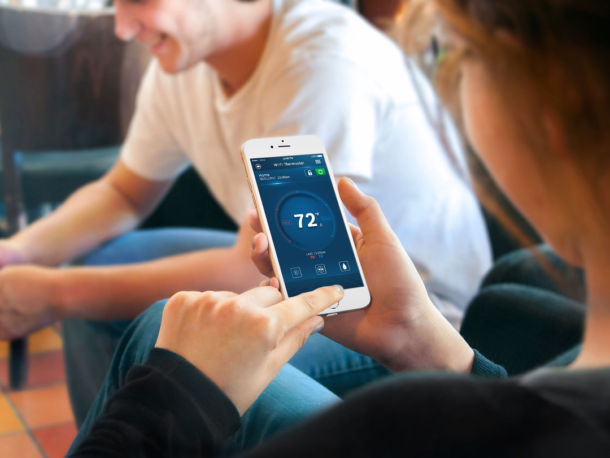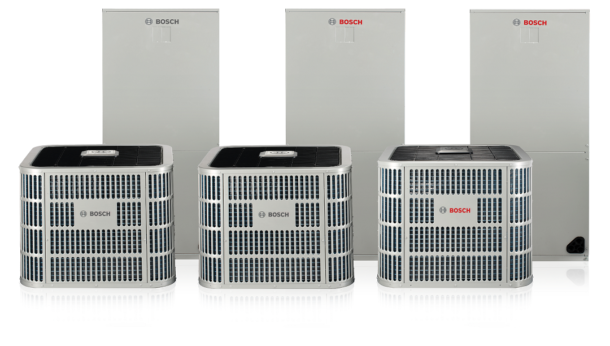If there is one thing we humans have done almost universally over the past year, it is become more familiar with our living spaces.
In that time, people’s attitudes have evolved, and the industry is taking note. The following are some key HVAC trends that highlight what topics are on consumers’ minds—and what manufacturers are paying attention to.

With Control Comes Power…Literally
Connectivity is one of the watchwords of our time and there are two areas of connectivity that are becoming more important than ever. One is on the consumer side, the other on the contractor side—they both provide greater user interaction and allow for more efficiency in time and energy.
Consumer Connectivity: consumers want more control with their living space. Virtually every day more online tools have become accessible to support this demand. Many manufacturers have recently launched apps to enable users to remotely control their thermostat and provide the diverse settings desired to create the ideal temperature. Early on, the intent was to let the consumer have total and instant control when it came to temperature—when they left their house for the day, they could shut off the heating or air and have it turn back on minutes before they return home. During Covid an interesting thing happened as people spent more time at home… their heating and air bills went up. Consumers quickly learned a key principle about energy efficiency, particularly in the summer or winter months. Instead of using extreme temperature settings, in an effort to be more efficient, they could actually manage their temperature and cost far better by keeping the temperature set at a constant rate. If they leave it at 72 degrees, it will fluctuate between 71 to 73 degrees. This takes less energy to cool the space within that parameter than it does to quickly lower the temperature from 90 to 72 degrees. Another significant efficiency lesson learned is an appliance such as a refrigerator cannot function optimally when the external room temperature reaches temperatures in the 80’s or 90’s. It takes a considerably higher amount of energy for proper heat exchange to keep those perishables cold and the ice cream frozen.
Consumers now want more nuanced control so they can optimize the temperature for specific times of the day and specific activities such as eating dinner, entertaining and sleeping. They have become enlightened to how much more advantageous it is to them to maintain not just temperature for comfort, but for electrical efficiency.
Contractor Connectivity: Today’s products are all manufactured with materials and technology that have improved performance, but parts still wear out, regular maintenance is needed, and repairs are still required. Enhanced connectivity gives new layers of precision to this process. For instance, if something quits or is functioning outside of recommended parameters within a smart HVAC system, it will trigger an automated response to the homeowner with a specific error code. When they call the contractor, the contractor can look up that error code on their app and see what it is specifically referring to. That way, if the compressor needs to be replaced, the contractor can check their inventory and make sure the exact compressor and associated parts are in the truck before they arrive at the customer’s home. This ensures that the service situation is resolved very efficiently. Customers feel taken care of and the contractor can quickly be on their way. Overall, both consumer and contractor are able to exercise far greater control over managing their needs.

Breakneck Speed of Innovation
The Internet of Things has been called the next industrial revolution—and for good reason. Having everything connected changes how we interact with our environment. The challenge is that change is coming much faster than many consumers are comfortable with. Since HVAC systems are all about comfort, manufacturers need to make sure their customers, who have long used an analog system are not intimidated with a complicated digital interface.
For example, a manufacturer brand found that older people who were used to a traditional thermostat were complaining about their experience with an upgraded system. They didn’t like the new touchscreen because there were no “real buttons” to push and too many options. The manufacturer went back to the drawing board and designed a new interface. Today their customers have two options, a slick, flat touch screen or an interface that is just as technologically advanced but includes some very user-friendly buttons that can actually be pushed. Following the trend of aligning the human factors and usability of the technology with the consumer’s level of comfort with the technology has paid off. The push-button option has become by far the most popular option with those over 55.

Everything Electric
In the wake of “heat domes” and hurricanes, the run from fossil fuels is happening faster than ever. The trend for electrification is as hot as the asphalt outside. In the Northeast, cities are placing a moratorium on gas where no new gas projects are allowed, and no new gas lines can be installed in cities for the heating of homes and buildings (only small gas lines for cooking).
One HVAC solution in particular is receiving a massive amount of attention these days. Heat pumps. There are many reasons for this, they are eco-friendly, require no fossil fuels such as heating oil or gas, like a boiler or furnace would use to make heat and they are very effective at both heating and cooling a space. On top of that, they use a small amount of electricity that in many cases can be offset with solar panels. Recent advancements in heat pump technology have overcome one of the greatest stumbling blocks to this option. They used to be limited in how far north products could be installed because of cold winters. Today, new systems can make heat in temperatures as low as -22 degrees Fahrenheit. Now energy-efficient heat pumps can be installed from Mexico to Northern Canada and everything in between.
Another hot item in the electrical area of heating and cooling is an exceptional alternative to traditional HVAC systems, ductless mini splits. These products focus on heating and cooling individual rooms by utilizing a combination of efficient technologies to achieve high SEER ratings while reducing electricity usage. These systems are used throughout Europe and elsewhere in the world and are now seeing a surge in the U.S. Part of the reason for the rapid adoption of mini splits is due to the military’s use of the technology in the middle east for the past 20 years. People saw how effective and efficient these solutions were in handling the extreme hot and cold temperatures found in the deserts and mountains of the Middle East. As they came back, they began to install them in their own homes.
 Guest Blog by Melvin Harris
Guest Blog by Melvin Harris
Melvin Harris is a 22-year veteran in the HVAC industry. He serves as the Director of Residential Sales with Bosch Thermotechnology.




Join the conversation: